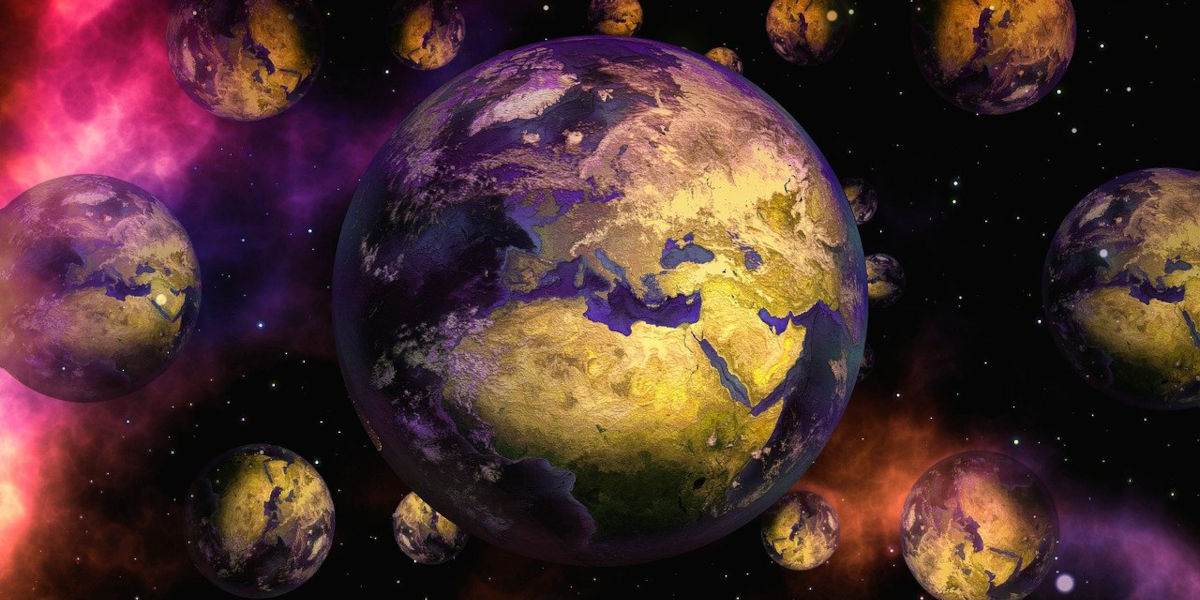Scientific exploration has always been fascinating, but nothing quite stokes our curiosity and sense of wonder like the concept of multiple universes. As we venture into the elusive and enigmatic aspects of cosmology, we're left to ponder one perplexing question: Do Multiple Universes Exist? In this comprehensive article, we're going to unravel the complicated notions of the multiverse theory and present it in a more digestible manner. Welcome to what we like to call: Multiverse Theory Simplified.
Multiverse Theory Simplified: Grasping the Basics
Let's begin by breaking down the essence of what the multiverse theory is truly about. As the name implies, the multiverse theory is the hypothesis that there might not just be one single universe – but an infinite number of universes, each consisting of its unique version of reality. This concept creates a broad spectrum of possibilities, where the seemingly impossible might be possible in another universe.
For example, picturing a universe where gravity functions inverse or where time runs backward might sound like a far-fetched sci-fi story. But according to the multiverse theory, these atypical universes might exist as real and valid as our own. They are simply tucked away, hidden in separate dimensions beyond the reach of our current observations and scientific instruments.
What is The Evidence for a Multiverse?
You may be wondering, how can this be? If these alternate universes are beyond our immediate observational scope, what evidence do we have that supports their existence at all?
Well, the answer lies in the intricate realms of theoretical physics and cosmology, where several theories suggest the existence of multiple universes; these include Quantum Mechanics, String Theory, and Inflationary Cosmology. Each draws us closer to the evidence for a multiverse that we seek.
Let's lavish some light on these theories to acquire a better understanding.
Quantum Mechanics
Quantum mechanics, the standard model of particle physics, has one interpretation known as the 'Many Worlds Interpretation.' According to this premise, each time a quantum event occurs, the universe 'splits' into multiple realities, each reflecting a unique outcome of that event. So, if you're having cereal for breakfast in this universe, in another one, you may opt for scrambled eggs.
String Theory
On the other hand, String Theory paints another captivating picture of the multiverse. It proposes that what we perceive as particles are actually tiny, one-dimensional strings vibrating at different frequencies. This theory, combined with the concept of additional dimensions - beyond the three of space and one of time that we're familiar with - can lead to the notion of a multiverse.
In a previous piece, we acquainted you with the concept of the Multiverse, the marvel behind its enigmatic existence, and the intricate tapestry of the cosmos it weaves. Having laid the groundwork, let's delve deeper into some of the most accepted theories that underpin this fascinating concept. Buckle up, as we’re about to journey across the expanses of space-time and beyond!
The Bubble/Parallel Universes
One of the most intriguing versions of the Multiverse theory lies in the concept of Bubble or Parallel Universes. This theory posits that our universe is just one in an infinitely expanding cosmos, wherein countless other universes reside like ‘bubbles’ in a cosmic foam. Propounded by Andrei Linde, the theory arises from the concept of Eternal Inflation, a process that infinitely creates universes in a higher-dimensional space. These ‘bubble’ universes could harbour diverse physical constants; some may even challenge the laws of physics as we know them!
The Multiverse and Quantum Mechanics
Moving from cosmology to quantum physics, another speculation arises - the Many Worlds Interpretation (MWI). First proposed by Hugh Everett in 1957, MWI interprets quantum mechanics by proposing that for every possible outcome from any event, there is a branching universe; a place where that outcome occurs. Scribe this onto an universal scale, and you have an endlessly branching tree of universes, each real and equally valid. No 'collapses' occur, only continuous splitting, creating a quantum multiverse.
String Theory's Multiverse
One cannot speak about the Multiverse without a mention of String Theory. Proposing a universe composed of one-dimensional 'strings', String Theory opens up additional dimensions - as many as seven extras. Threading these dimensions leads to a version of the Multiverse comprised of 'brane worlds’. Imagine sheets of reality, each a separate universe, floating in a higher-dimensional space: the “bulk.”
Final Thoughts
The multiverse concept might seem like the stuff of fantasy or science fiction, yet it is a robust area of study in theoretical physics. Constantly shaping and reshaping values, dimensions, and laws of physics beyond our comprehension, the Multiverse proposes diverse, vibrant, and dynamic realms existing side-by-side, within and beyond our own.
Although the proof to validate these theories is yet to emerge, the multiverse undoubtedly offers infinite realms of wonder and exploration. It takes us to other worlds, breaks boundaries, and pushes the limits of our understanding, all while questioning and reshaping our perception of reality.




